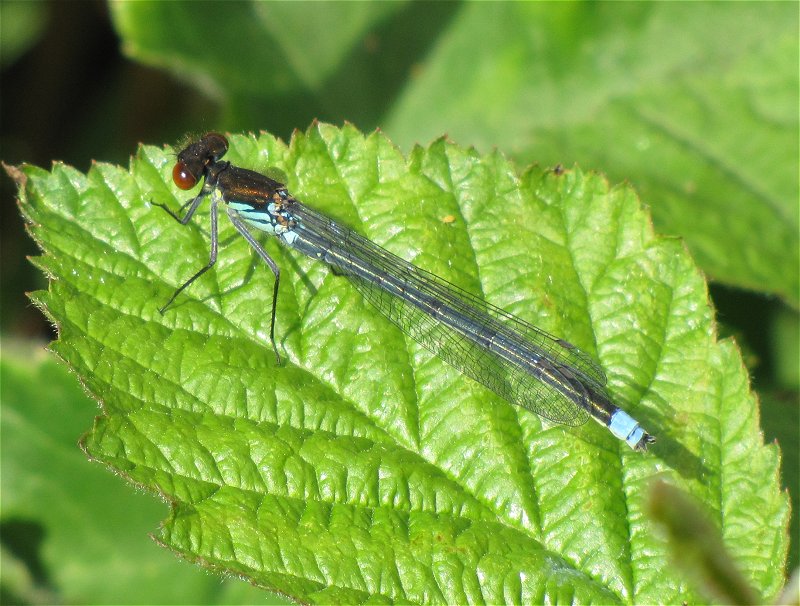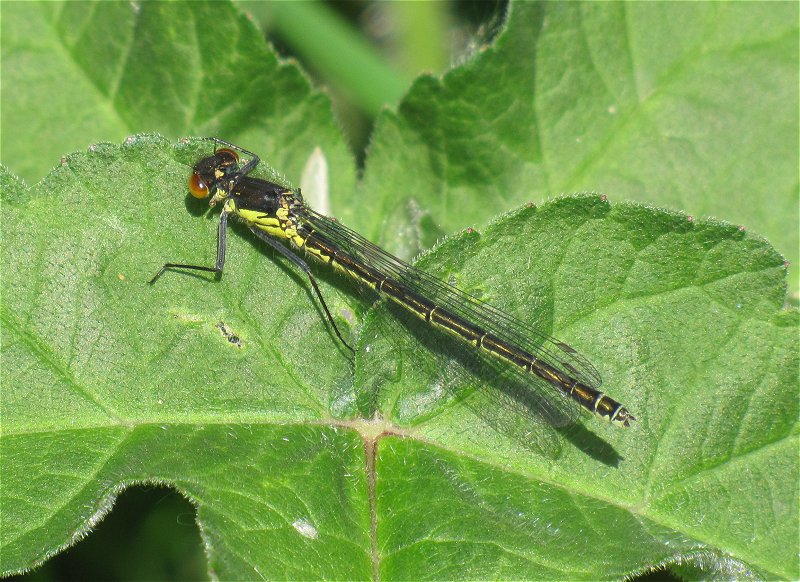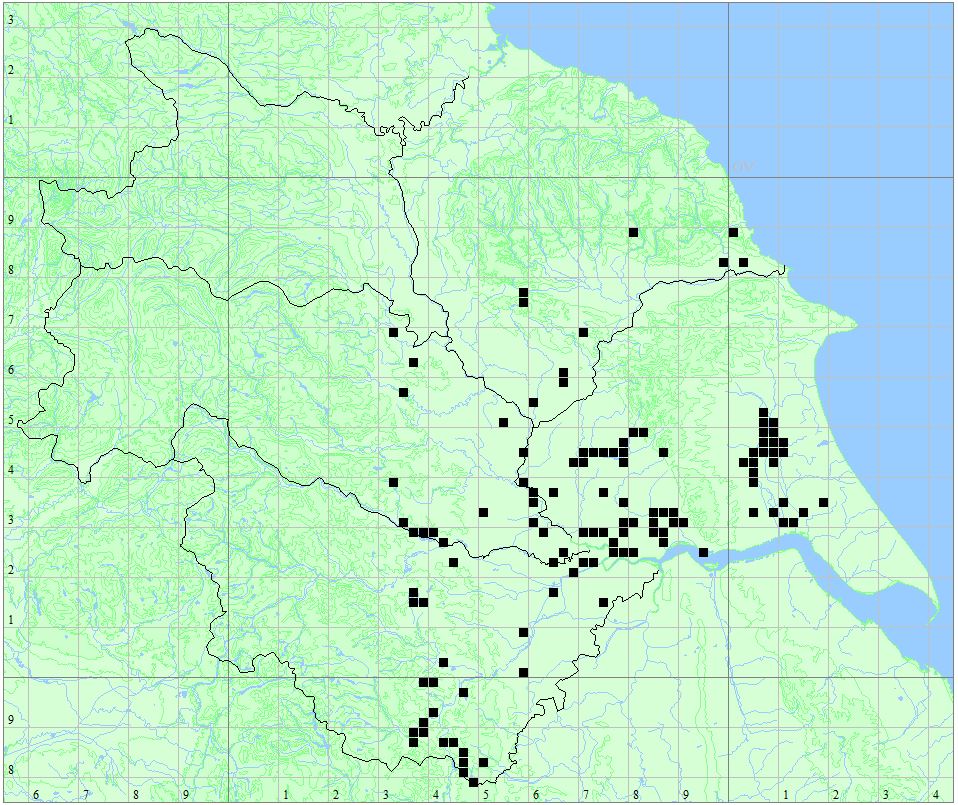<-Previous Species – Next Species->
Length
33-37mm; Wingspan: Male 43mm; Female 46mm; Hindwing 19-24mm
Male
Mainly bronzed black with bright red eyes. Top of thorax lacking any antehumeral stripes. Segments 1, 9 and 10 are blue. Sides of thorax are blue with black line and spur present. Legs are black. Immature male is similar to female. Similar to Small Red-eyed Damselfly which is smaller, differences occur in the blue markings. At rest the wing tips reach in to segment eight, in Small Red-eyed Damselfly the wing tips only reach as far as segment 6 or 7. Generally holds its abdomen level, where as Small Red-eyed Damselfly often holds its abdomen slightly upcurved towards the end.
Female
Mainly black with green sides to thorax containing black line and spur. Segments 9 and 10 are black with narrow blue divisions. Eyes are a dull red colour. Usually have short shoulder stripes, though some lack them all together and some may form as explanation marks.
Behaviour
Strong direct flight over water. Spend lots of time resting on broad floating leaves such as water lilies. Mats of algae and debris are also used and males may use surrounding shrubs if there is little floating vegetation. After emergence they will spend time away from water to mature. The first three weeks of emergence is probably the best time to encounter this species at close quarters. Females usually only appear at water to breed. Copulation takes place over water or on nearby vegetation. Egg laying is mainly in tandem, both sexes often submerging. They are laid mainly on the underside of Water Lilies, though other floating vegetation will be used.
Habitat
Preference for larger ponds, lakes and canals. Requires abundant floating vegetation, such as water-lilies Nymphaceae, or broad-leaved pondweed Potamogeton natans. When these are absent it may use floating algae mats, or rest on bankside vegetation.
Flight Period
 Status
Status
Species is at the northern edge of its range in Yorkshire.
Distribution Map
Locations
- Thorne Moors – Humberhead Peatlands NNR
- Thorpe Marsh
- Oakhill & Goole Brick Ponds
- Treeton Dyke
- Saltmarshe Delph
- Pulfin and High Eske Nature Reserve
- Pocklington Canal
- North Cave Wetlands
- Market Weighton Canal and Newport Ponds
- Leven Canal
- Eastrington Ponds
- Broomfleet Washlands
- Noddle Hill Nature Reserve
- Tophill Low Nature Reserve
- Red-eyed Damselfly Erythromma najas


